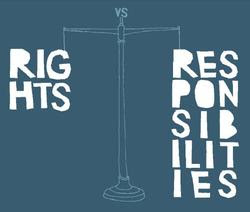Q.1.2 Facebook in a quest to mitigate the effects of infrastructure and the digital divide have launched Project Aquila. The problem of infrastructure is prevalent in Africa. Discuss the implication of all the different forms of the digital divide.
Technology is changing at a rapid rate, very much like Facebook. Due to the rapid changes in computer hardware power and the introduction of new technologies and the access to data and information is critical. However this access is not universal. The issue of access or lack of it is known as the digital divide and is based on several gaps.
1.The Digital Divide – a Socio-economic Divide
1.The Digital Divide – a Socio-economic Divide
The first main issue surrounding access is the ability to access in general data and information throughout the use of digital devices and this lack of access is known as the 'digital divide" or can also be referred to as those that have and those that have not (Dutton, 2004). This is relevant in the case of Internet use where nations vary widely in the number / ratio of the public with access to the Internet. This divide is associated with socio-economic factors but like the gap between developed countries and developing countries the digital divide is also associated with geo-demographic factors.
Having the skills to operate a computer is probably the biggest opportunity, or hindrance, to the adoption, or not, of technology for development. These skills relate to digital literacies. This is perhaps a greater issue than that of physical access, as those that are disadvantaged due to socio-economic factors have less exposure to digital technology, thereby impeding their skills acquisition in the job market. Although accessibility is increasing, skills are not necessarily conforming at the same rate of increase.However, it should be noted that despite socio- economic factors playing a role in the level of skills, it is not all bound to social strata but also to personal factors.
2. The Digital Divide – a Divide in Infrastructure
Continuing along the theme of developing vs developed
countries lies the issue of infrastructure. Quite simply, it
is the infrastructure of developing countries that often impedes
the broad range of access, in addition to socio-economic
factors. Developed countries have a far greater penetration of appropriate and up-to-date infrastructure than that of developing countries.
3. The Digital Divide – a Divide in Content
According to Dutton (2004), nearly 70% of websites are in
English. Although this has changed substantially, the fact of the
matter remains that English dominates the web.
4. The Digital Divide – a Gender Divide
People derive huge benefits through the use of and access to the Internet. The Internet gender gap is notable
in developing countries, with very real consequences to the girls
and women of those communities. The statistics show that, on
average, women are online in developing countries 23% less
than that of their male counterparts.
5. The Digital Divide – a Skills Divide
Having the skills to operate a computer is probably the biggest opportunity, or hindrance, to the adoption, or not, of technology for development. These skills relate to digital literacies. This is perhaps a greater issue than that of physical access, as those that are disadvantaged due to socio-economic factors have less exposure to digital technology, thereby impeding their skills acquisition in the job market. Although accessibility is increasing, skills are not necessarily conforming at the same rate of increase.However, it should be noted that despite socio- economic factors playing a role in the level of skills, it is not all bound to social strata but also to personal factors.
6. The Digital Divide – the Universal Access Divide
Issues pertaining to digital access is that of those who
are physically disadvantaged. The
cost of such hardware and software is exorbitant. Those that suffer from some physical disability are often disenfranchised when it comes to access, not because of the lack of skills but, moreover, the hardware and software utilised and available. 




Comments
Post a Comment